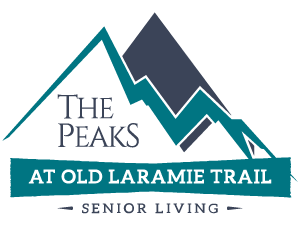The life space concept directly affects residents’ health, well-being and happiness. It refers to the physical and emotional environments where individuals spend their time and engage with the world around them. For those in their golden years, this includes their home, the nearby neighborhood and how far they venture beyond their immediate surroundings. Understanding and optimizing life space for seniors can significantly improve the quality of life for you or your loved ones.
For many older adults, maintaining mobility and staying connected to their surroundings is essential to feeling independent and fulfilled. A thoughtfully designed life space encourages movement, promotes social interaction and creates opportunities to engage in enriching activities. When you or your loved ones have a well-defined life space, it can reduce feelings of isolation, increase happiness and enhance overall health outcomes.
The Importance of Life Space for Seniors
For older adults, life space is more than just the walls of their home. It includes all the areas they move through and interact with daily. These environments influence their physical activity levels, mental well-being and connection to the community. A life space that encourages engagement can make a difference, especially in retirement communities where mobility and social opportunities are prioritized.
A wider life space gives the elderly access to more opportunities for physical activity, social interaction and intellectual stimulation. When these elements are present, they contribute to overall well-being, helping to maintain independence and reduce the risks associated with aging. Life space matters because it sets the stage for daily living, assisting residents to lead fulfilling lives as they age.
Effects of a Constricted Life Space
When life space becomes limited, it can negatively impact physical and mental health. Many residents, especially those with reduced mobility, may find themselves staying within the confines of their home. This constricted life space can increase feelings of loneliness and social isolation, leading to a decline in mental health. Research shows that limited mobility and engagement with the outside world can also increase the risk of cognitive decline, including Alzheimer’s disease.
Being confined to a small area day after day reduces physical movement, which can lead to muscle deterioration, joint stiffness and other health concerns. The lack of mental and social stimulation can further contribute to feelings of depression and anxiety. It’s crucial to expand life space whenever possible, as it helps maintain cognitive and emotional health while improving physical well-being.
How Life Space Encourages Movement and Mobility
Movement is an essential aspect of healthy aging. Staying physically active reduces the risks of chronic conditions such as heart disease, arthritis and diabetes. Residents with a broad life space are more likely to engage in daily movement, which helps maintain their strength and flexibility.
Communities designed with residents in mind often incorporate features that encourage walking and outdoor activities. Paths for walking, nearby parks and accessible public spaces all promote regular physical activity, which is critical to aging well. Being able to walk to a nearby garden or attend community events keeps the body moving, which in turn improves balance, coordination and overall fitness.
Encouraging movement within a well-planned life space is not just about physical health. It’s also about giving residents the confidence to explore their surroundings and feel comfortable navigating the world around them. With access to exclusive programs, activities and events, residents can enjoy the benefits of a lifestyle that supports both physical and mental health.
Mental Health Benefits of an Expanded Life Space
A stimulating environment is vital for mental health. Residents who can explore their surroundings, meet with others and enjoy community spaces are more likely to stay mentally sharp and emotionally balanced. Life space plays a critical role in giving access to these stimulating environments.
When residents can interact with others and participate in communal events, it reduces the likelihood of depression and anxiety. Social interaction boosts cognitive engagement, helping to keep the mind active and engaged. Mental health is closely tied to feeling part of a community and expanding life space offers opportunities for residents to remain involved in meaningful ways.
In addition to physical activity, life space brings access to intellectual stimulation. Whether it’s visiting area attractions, attending local community events or enjoying on-site senior living amenities, these opportunities can inspire creativity and keep cognitive functions strong.
Quiet Spaces for Rest and Reflection
While socialization and movement are necessary, it’s equally important to provide quiet areas for rest and reflection. Life space should include peaceful environments where residents can retreat for moments of introspection and relaxation. These areas create a sense of calm and serenity, promoting mental clarity and emotional well-being.
In retirement communities, these spaces might include gardens, reading rooms or meditation areas where residents can enjoy peaceful moments alone or with loved ones. Having access to quiet areas helps residents balance the active aspects of life space with the emotional benefits of solitude, making it easier to maintain a well-rounded and fulfilling lifestyle.
Creating Tailored Life Spaces for Individual Needs
No two individuals are the same and life spaces should reflect the unique preferences and needs of each person. A personalized approach makes sure that every resident feels comfortable and capable within their surroundings. Tailored environments take into account physical abilities, emotional preferences and lifestyle choices, creating a living space where everyone can thrive.
For some, this may mean easy access to outdoor walking paths, while others may prioritize proximity to social and recreational activities. By understanding these personal preferences, communities can design life spaces that encourage participation and enhance the resident experience. This approach fosters a sense of belonging, making it easier to feel at home in the community.
The Role of Transportation in Expanding Life Space
Access to transportation is another essential element of life space for residents. Being able to travel to appointments, local shops or events outside the community expands life space and helps maintain independence. When residents have access to reliable transportation, it enables them to stay connected with the wider world and continue pursuing activities they enjoy.
In retirement communities that deliver transportation services, residents are more likely to venture beyond their immediate surroundings. This freedom enhances their overall quality of life by keeping them engaged with their local community and maintaining their independence.
Measuring Life Space and Its Impact on Well-Being
Life space can be measured in various ways, including questionnaires and life-space diaries. These tools help assess how far individuals travel from their homes and how frequently they engage with different environments. Understanding how mobility and engagement fluctuate over time allows caregivers and loved ones to identify areas where support might be needed.
Measuring life space gives valuable insights into the relationship between mobility and well-being. When life space is maintained or expanded, it typically results in better health outcomes, higher levels of independence and greater overall satisfaction with life.
How Life Space Impacts Longevity and Independence
Life space doesn’t just affect daily routines; it plays a significant role in long-term health outcomes, including longevity and sustained independence. The elderly in their golden years who regularly engage with their surroundings, whether through walking, socializing or participating in activities, tend to live longer, healthier lives. Expanding life space allows for greater exposure to physical and mental stimulation, both of which are crucial for maintaining vitality in later years.
Research shows that residents who move beyond the immediate confines of their homes have lower rates of mortality and a reduced risk of cognitive decline. Movement keeps muscles strong, improves cardiovascular health and supports balance, while interaction with others prevents isolation and loneliness. These benefits contribute to an improved sense of purpose and self-sufficiency, which are essential for preserving independence.
Communities that prioritize expanding life space bring residents more than just a place to live—they offer an environment that fosters growth, health and happiness. By creating spaces that support movement, social connections and personal reflection, these communities give older adults the tools they need to live independently for as long as possible. Maintaining an expansive life space is key to thriving during the aging process.
Future Directions for Life Space Research
Research into life space continues to uncover connections between mobility, cognitive health and overall longevity. By studying how different environments influence health outcomes, we can gain a better understanding of the factors that contribute to healthy aging.
Future studies will likely focus on how expanding life space impacts older adults’ cognitive function, physical health and emotional well-being. As more is learned about these relationships, communities can continue to develop strategies that enhance life space so that aging is a positive and enriching experience for everyone involved.
Discover How Our Assisted Living Community Enhances Life Space
At our Assisted Living community, we recognize the importance of life space in enhancing well-being. We design our spaces to encourage physical movement, social interaction and moments of quiet reflection. By expanding life space, we help you or your loved ones maintain independence and enjoy a higher quality of life. Contact us today to learn more about our senior living options and how we can help create a fulfilling environment tailored to your needs.

